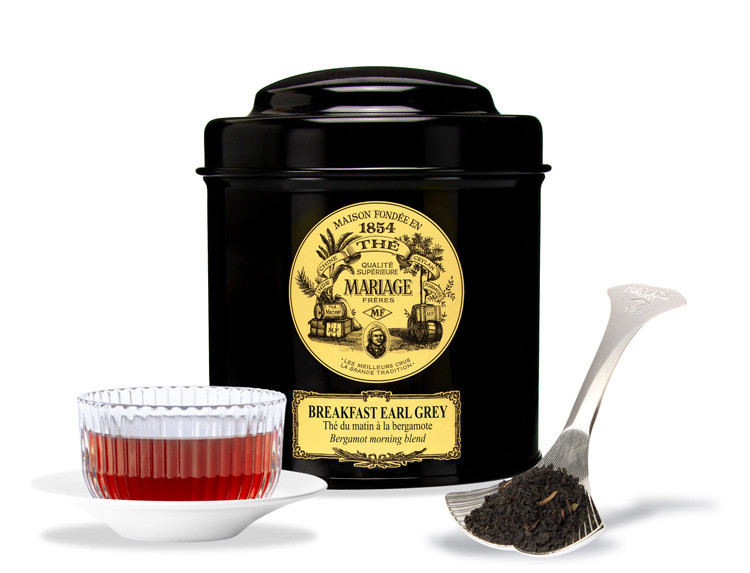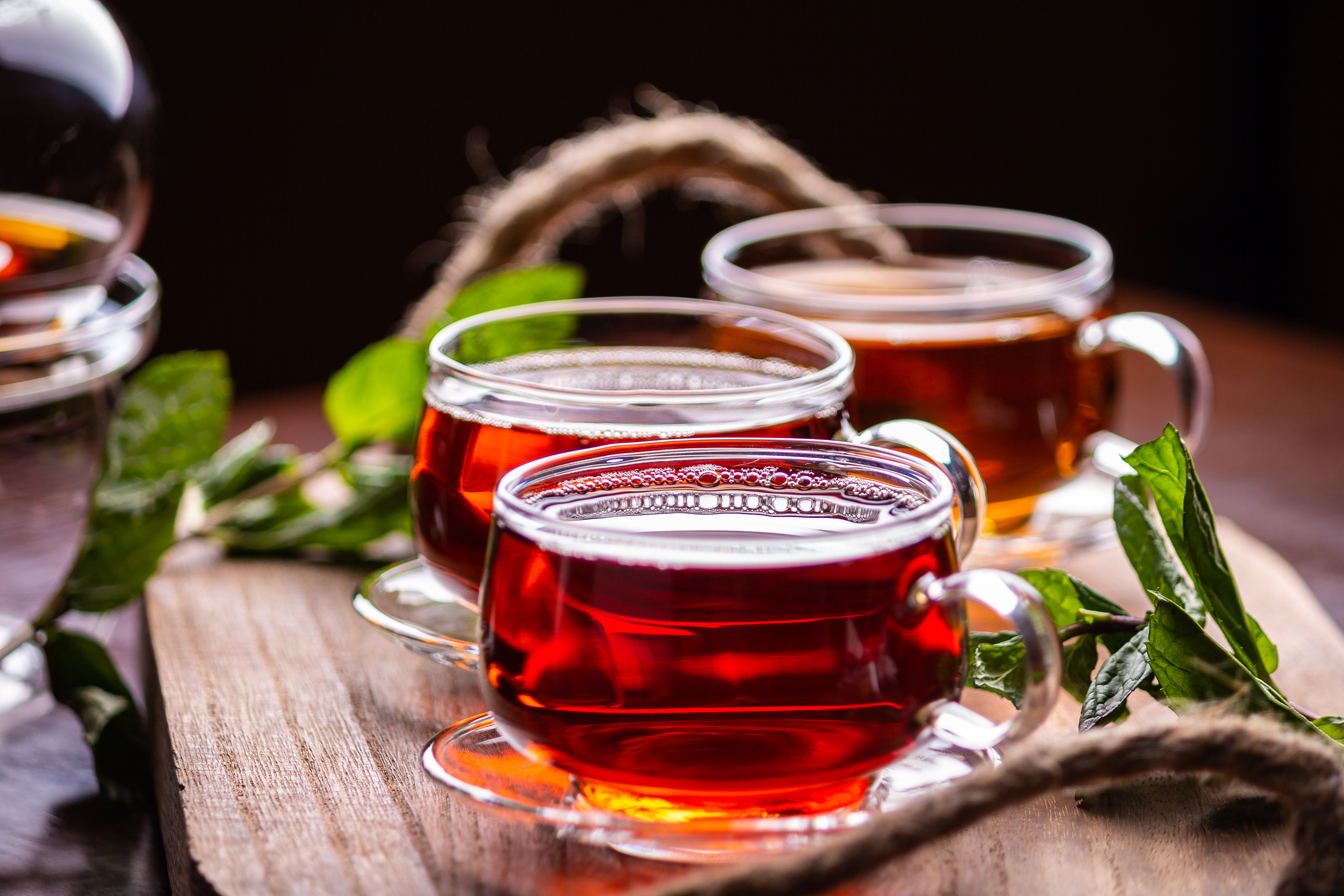Introduction

Breakfast Tea and Earl Grey are two classic tea options that have gained popularity worldwide. While they may have different flavor profiles, they both offer a delightful tea-drinking experience. This article aims to explore the history, origins, flavor profiles, health benefits, and brewing methods of these two teas. By comparing and contrasting the characteristics of Breakfast Tea and Earl Grey, readers will gain a better understanding of the unique qualities that each tea brings to the table. Whether you prefer a bold and robust cup of Breakfast Tea or a smoother and citrusy Earl Grey, there is a perfect choice for every tea lover.
Overview Of Breakfast Tea And Earl Grey Tea
Breakfast Tea and Earl Grey Tea are two classic tea options that have gained popularity worldwide. Both teas offer a delightful tea-drinking experience with their unique flavors and aromas. Breakfast Tea is a blend of the best black teas from India, Sri Lanka, Kenya, Malawi, and China, creating a bold and robust cup of tea. On the other hand, Earl Grey Tea is a blend of Chinese and Indian black tea with the addition of bergamot essential oil, resulting in a smoother and citrusy taste. These teas have their own distinct characteristics and are loved by tea enthusiasts around the world.
History And Origins
English Breakfast Tea and Earl Grey Tea have rich histories and fascinating origins. English Breakfast Tea was created in 1892 by Scottish merchant Robert Drysdale, who crafted the blend to complement hearty breakfasts. It became popular due to its robust flavor and ability to pair well with milk and sugar. On the other hand, Earl Grey Tea can be traced back to the 19th century when it was believed to be named after Charles Grey, the 2nd Earl Grey of England. The tea first gained popularity when Chinese black tea was flavored with bergamot essential oil, creating a unique and aromatic blend. These teas have since been enjoyed by tea enthusiasts worldwide.
Historical Background Of Breakfast Tea

Breakfast tea has a rich historical background that dates back to the late 19th century. Scottish merchant Robert Drysdale is credited with creating the blend in 1892. He aimed to offer a robust and flavorful tea that could complement hearty breakfast meals. The popularity of breakfast tea quickly spread due to its strong flavor and its ability to pair well with milk and sugar. Today, breakfast tea is enjoyed by tea enthusiasts worldwide, and it continues to be a staple in many households as a comforting and energizing morning beverage.
Origin Story Of Earl Grey Tea
The origin story of Earl Grey tea traces back to the early 19th century in England. The tea blend is named after Charles Grey, the 2nd Earl Grey and a former Prime Minister. The precise details of how the blend was created are still debated, but the most popular story is that the blend was a gift to Earl Grey from a Chinese Mandarin as a token of gratitude for saving his son’s life. The tea was said to be flavored with bergamot, a citrus fruit, to offset the taste of lime in the local water source. Today, Earl Grey tea is beloved for its distinctive citrusy aroma and flavor.
Flavor Profiles
Both English Breakfast tea and Earl Grey tea have distinct flavor profiles that set them apart. English Breakfast tea offers a complex and intriguing taste, characterized by a strong and robust flavor with earthy undertones. On the other hand, Earl Grey tea has a more delicate and mild flavor, with a subtle hint of citrus. The bergamot flavor in Earl Grey tea adds a unique and refreshing touch, giving it a distinctive aroma and taste. Whether you prefer the boldness of English Breakfast or the citrusy notes of Earl Grey, both teas provide a delightful experience for tea enthusiasts.
Breakfast Tea Flavors And Aroma

Breakfast Tea offers a complex and intriguing flavor profile that is characterized by its strong and robust taste with earthy undertones. It has a rich and full-bodied flavor that is often described as malty or nutty. The aroma of Breakfast Tea is deep and inviting, with notes of toast and caramel. The combination of these flavors and aromas creates a comforting and satisfying tea experience. Whether enjoyed plain or with a splash of milk and sweetener, Breakfast Tea provides a bold and flavorful start to the day. Reference:
Earl Grey Tea Unique Taste And Characteristics
Earl Grey tea is known for its unique and distinct flavor profile. The addition of bergamot essential oil gives Earl Grey tea a citrusy and floral taste. The combination of the black tea leaves and bergamot creates a refreshing and aromatic brew. The bergamot oil adds a subtle sweetness while enhancing the natural flavors of the tea. Earl Grey tea is also recognized for its vibrant and fragrant aroma, making it a delightful sensory experience. The distinct taste and characteristics of Earl Grey tea make it a beloved and popular choice among tea enthusiasts.
Health Benefits
Both Breakfast Tea and Earl Grey Tea offer numerous health benefits. Breakfast Tea is rich in antioxidants, which can help protect the body against free radicals and reduce the risk of chronic diseases. It also contains caffeine, which can boost energy levels and increase alertness. On the other hand, Earl Grey Tea is known for its possible mood-enhancing properties and its potential to improve digestion. It also contains flavonoids, which have antioxidant and anti-inflammatory effects. Incorporating these teas into a balanced diet can contribute to a healthy lifestyle.
Health Benefits Of Consuming Breakfast Tea

Breakfast Tea offers numerous health benefits. It is rich in antioxidants, which can help protect the body against free radicals and lower the risk of chronic diseases. The tea also contains caffeine, which can boost energy levels and increase alertness. Moreover, Breakfast Tea may aid in digestion and promote healthy skin. Additionally, the high levels of polyphenols present in this tea have been linked to potential cardiovascular benefits, such as reducing the risk of heart disease. Adding Breakfast Tea to a balanced diet can contribute to overall health and well-being.
Nutritional Advantages Of Earl Grey Tea
Earl Grey tea offers several nutritional advantages. It contains antioxidants, such as polyphenols, flavonoids, and catechins, which can help protect the body against free radicals and reduce the risk of chronic diseases. This tea also contains essential vitamins and minerals, including vitamin C, potassium, and calcium. Furthermore, Earl Grey tea is low in calories and sugar-free, making it an excellent addition to a healthy diet. Its natural compounds may support heart health, improve digestion, and promote relaxation. Incorporating Earl Grey tea into your daily routine can contribute to a well-balanced and nutrient-rich lifestyle.
Brewing Methods
When it comes to brewing methods, both Breakfast Tea and Earl Grey Tea can be prepared using similar techniques. Here are the recommended brewing methods for each tea:
- Breakfast Tea: To fully enjoy the robust flavors of Breakfast Tea, it is best to brew it with boiling water at a temperature of 212°F (100°C) for about 3-5 minutes. Use one teaspoon of loose tea leaves or one tea bag per cup. Steep the tea for the desired strength, and then strain or remove the tea bag before serving.
- Earl Grey Tea: For a perfect cup of Earl Grey Tea, steep it with water at a slightly lower temperature, around 194-203°F (90-95°C). Infuse one teaspoon of loose tea leaves or one tea bag in a cup of water for 2-4 minutes. Adjust the brewing time to achieve your preferred strength. Remove the leaves or tea bag and enjoy.
Following these brewing methods will ensure that you get the best flavors and aromas from your Breakfast Tea or Earl Grey Tea. Experiment with steeping times and tea-to-water ratios to find your perfect cup.
Recommended Brewing Techniques For Breakfast Tea

To fully savor the robust flavors of Breakfast Tea, it is best to brew it with boiling water at a temperature of 212°F (100°C) for about 3-5 minutes. Use one teaspoon of loose tea leaves or one tea bag per cup. Allow the tea to steep for the desired strength, and then strain or remove the tea bag before serving. This method ensures that you extract the full range of flavors from the tea leaves, resulting in a rich and satisfying cup of Breakfast Tea. Adjust the steeping time to achieve your preferred strength.
Best Practices For Preparing Earl Grey Tea
To prepare a perfect cup of Earl Grey Tea, start by boiling water at a temperature of 212°F (100°C). Place one teaspoon of loose tea leaves or one tea bag into a cup. Pour the hot water over the tea leaves and let it steep for 3-5 minutes. This allows the flavors of the black tea and bergamot oil to infuse. Remember, over-steeping can result in a bitter taste, so adjust the steeping time to your preference. Once steeped, remove the tea leaves or tea bag and enjoy the aromatic and soothing experience of Earl Grey Tea.
Conclusion
In conclusion, the comparison between Breakfast Tea and Earl Grey Tea reveals two distinct blends that cater to different preferences. While Earl Grey Tea entices with its refreshing and citrusy flavor derived from bergamot oil, English Breakfast Tea offers a robust and hearty taste that complements breakfast foods perfectly. Ultimately, the choice between the two teas comes down to personal preference and the desired flavor experience. Both teas provide unique health benefits and enjoyable brewing methods. Whichever tea you choose, savor the rich history and delightful flavors that make Breakfast Tea and Earl Grey Tea timeless classics.
Comparison Of Breakfast Tea And Earl Grey Tea

When it comes to comparing Breakfast Tea and Earl Grey Tea, there are distinct differences in flavor and aroma. Breakfast Tea offers a robust and hearty taste with a malty undertone, making it a perfect companion for breakfast foods. On the other hand, Earl Grey tea entices with its refreshing and citrusy flavor derived from bergamot oil. While both teas have their own unique characteristics, the choice ultimately comes down to personal preference and desired flavor experience. Whether you prefer the boldness of Breakfast Tea or the zesty notes of Earl Grey, both teas provide a delightful and invigorating drinking experience.
Personal Preferences And Considerations
When it comes to choosing between Breakfast Tea and Earl Grey Tea, personal preferences play a significant role. Some individuals may prefer the bold and robust flavors of Breakfast Tea, which pairs well with hearty breakfast foods. Others may be drawn to the zesty and citrusy notes of Earl Grey, finding it refreshing and invigorating. It is important to consider your desired flavor experience and aroma when selecting a tea. Additionally, factors such as caffeine content and health benefits may also influence your choice. Ultimately, the decision between Breakfast Tea and Earl Grey Tea is subjective and based on individual preferences.
FAQ About Breakfast Tea Vs Earl Grey: A Tale Of Two Tea Classics
Q: What is Breakfast Tea?
A: Breakfast tea is a strong and full-bodied black tea blend typically enjoyed in the morning to kick start the day. It often includes Assam, Ceylon, and Kenyan teas, offering a robust and invigorating flavor.
Q: What is Earl Grey Tea?
A: Earl Grey is a black tea infused with bergamot oil, giving it a distinctive citrusy aroma and flavor profile. It is named after Charles Grey, the 2nd Earl Grey and former Prime Minister of the United Kingdom.
Q: How do the flavors of Breakfast Tea and Earl Grey differ?
A: Breakfast tea is known for its malty and rich taste, ideal for those who prefer a bold and hearty brew. In contrast, Earl Grey has a more delicate and fragrant character with the added citrusy notes from the bergamot oil.
Q: When is the best time to enjoy Breakfast Tea or Earl Grey?
A: Breakfast tea is popular in the morning due to its robust nature that pairs well with milk or sugar. Earl Grey, on the other hand, is often enjoyed in the afternoon as a soothing and aromatic tea to savor.
Q: Can Breakfast Tea and Earl Grey be served with milk?
A: While it is common to add milk to Breakfast Tea to enhance its richness and smoothness, Earl Grey purists prefer to enjoy it without milk to fully appreciate the bergamot flavor. However, personal preferences vary, so feel free to experiment!
Q: Are there any health benefits to drinking Breakfast Tea or Earl Grey?
A: Both Breakfast Tea and Earl Grey contain antioxidants and may offer various health benefits, such as boosting heart health and improving digestion. Remember to consume them in moderation as part of a balanced diet for optimal wellness.

Kostas Mediterranean is a family-owned Greek restaurant located in North Vancouver. Our passion for bringing the authentic flavors of Greece to the local community has been the driving force behind our establishment. We take pride in offering a warm and welcoming atmosphere where guests can experience the true essence of Greek hospitality. Our journey began with Kostas, whose culinary skills and love for Greek cuisine inspired the creation of the restaurant. With a desire to share his family recipes and traditions, Kostas set out to create a dining experience that captures the spirit of Greece. The result is a menu that showcases a delightful blend of traditional and modern Greek dishes prepared with the finest and freshest ingredients.